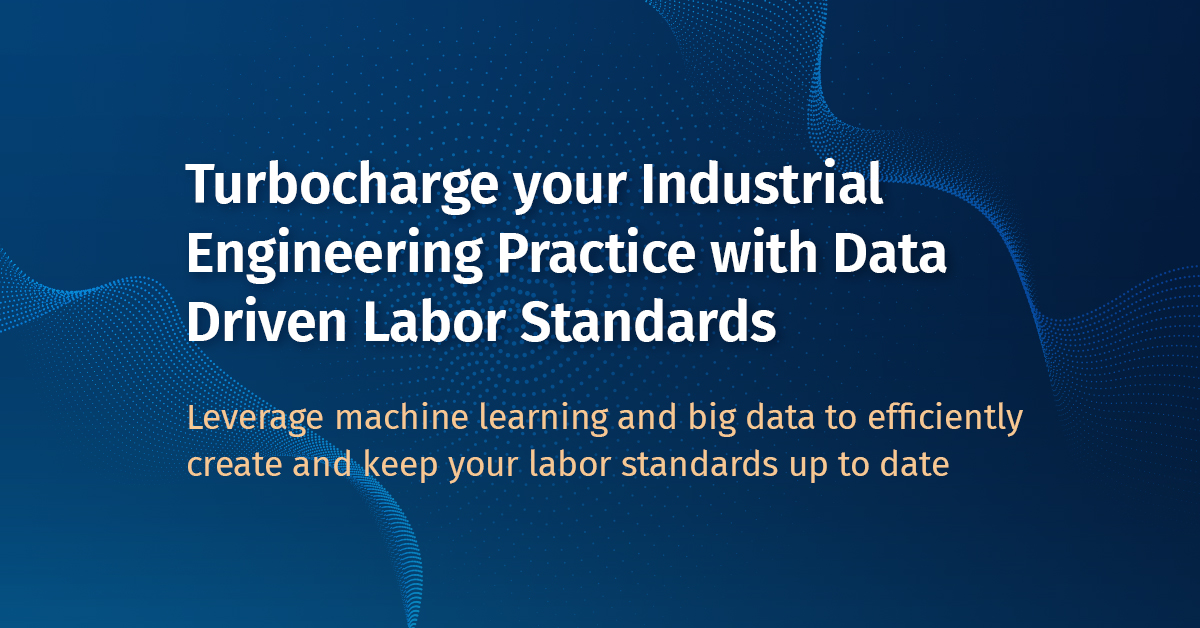Leverage machine learning and big data to efficiently create and keep your labor standards up to date
How do you measure the overall performance of warehouse employees? By comparing their individual performances against a labor standard. Traditionally, labor standards are created by industrial engineers through a very time intensive, and thus expensive, process. Big data and advanced computing tools have enabled new ways to develop labor standards outside of spreadsheets. These tools and practices reduce the cost and time to create labor standards, as well as improve their accuracy. Let’s compare and contrast the traditional approach against the modern method.
The Traditional Approach
The traditional industrial engineered approach is to use a reductionist model via a combination of observations using time and motion studies, as well as historical data sets created over many thousands of recorded observations. Each process is broken down into distinct components and independently measured for time.
Over hours of observations for each process across different employees, the engineer can build up hundreds of data elements and then use them to calculate the coefficient for each metric for the respective process. Sometimes Predetermined Motion Time System (PMTS) tables are referenced to expedite the process and validate results; nonetheless, substantial human effort is required. The ideal result is an engineered labor standard that is fair and consistent across all employees — but the cost of manual development can be staggering. The traditional manual approach can take between 200 and 400 hours for initial development, with an additional 40-80 in annual maintenance. This can result in upwards of $100,000 in costs.
Download the PDF: Modernize Industrial Engineering with Data Driven Labor Standards
The Modern Method
Data driven labor standards follow a similar development path, but instead of using observations and time and motion studies, it uses the on-site data available. In general, we recommend 1000 or more data points to build the data driven standard; the more data points there are available, the tighter the standard that can be calculated. Big data architecture and tooling enable you to calculate standards on millions of rows of data quickly.
Data driven labor standards identify the metrics available in the WMS data for the associated process. Easy Metrics calculates the correlation of each metric to the data standard independently. Studying correlations of metrics to standards is often rather eye opening; we frequently see engineered processes with up to 20 input metrics. However, when measuring metric correlation to productivity scores, usually only four or fewer metrics will have a statistically significant correlation and the remaining have minimal, if any, impact.
Easy Metrics Operations Financial Management (OpsFM) includes all of this tooling programmatically, and can be used to automate the creation of labor standards or augment the manually derived standards. Our proprietary technology substantially reduces the time and cost required to develop and maintain labor standards. When compared to the traditional approach, Easy Metrics only requires 10-20 hours for initial development and an equal amount of annual maintenance; data driven labor standards will often cost less than one-tenth of the traditional approach.
Which is better?
Easy Metrics has run comparison models across hundreds of processes and have found that the data driven approach consistently creates tighter, more accurate labor standards than the industrial engineered approach. Using machine learning and big data incorporates more data points into the process standard calculation – rather than the limited data collected during observations. The financial markets have used this approach the last two decades in trading algorithms to great success.
If you want to learn more about data driven labor standards, and how they can jumpstart your operation’s journey toward warehouse operational excellence, download our brief, “Modernize Industrial Engineering With Data Driven Labor Standards” here.





